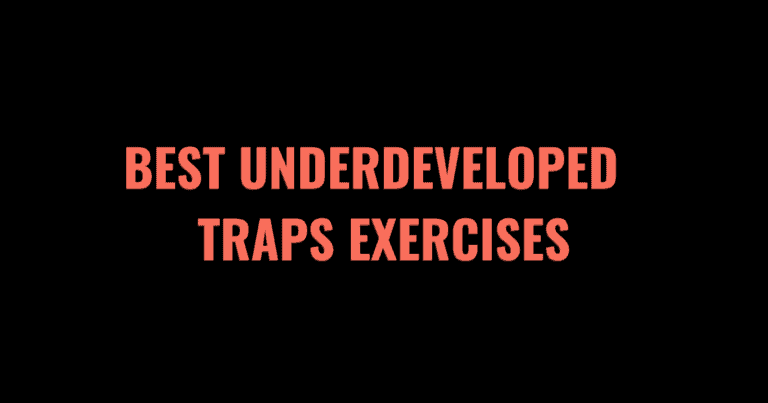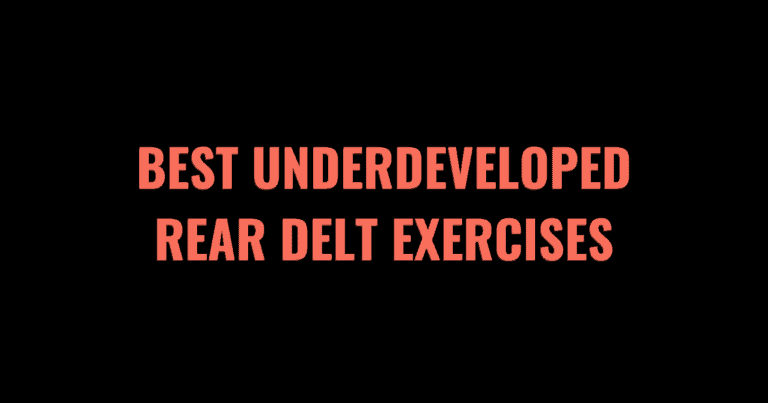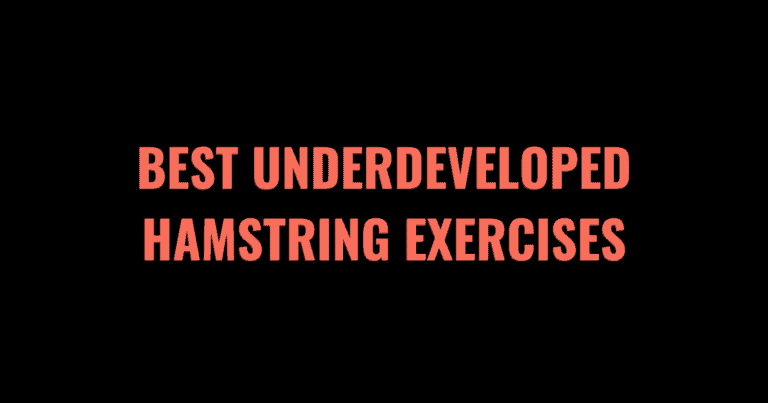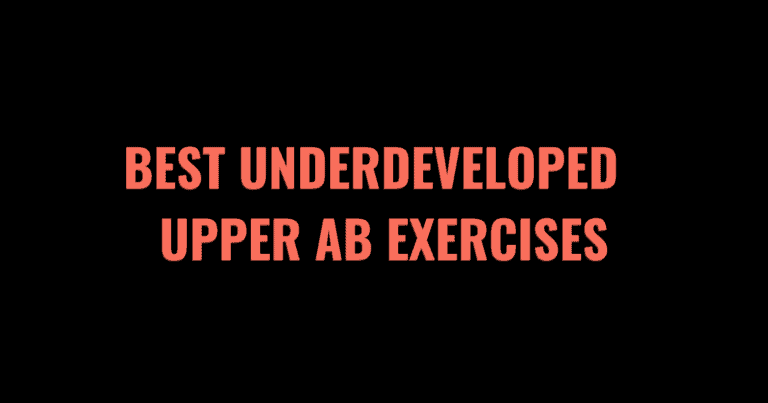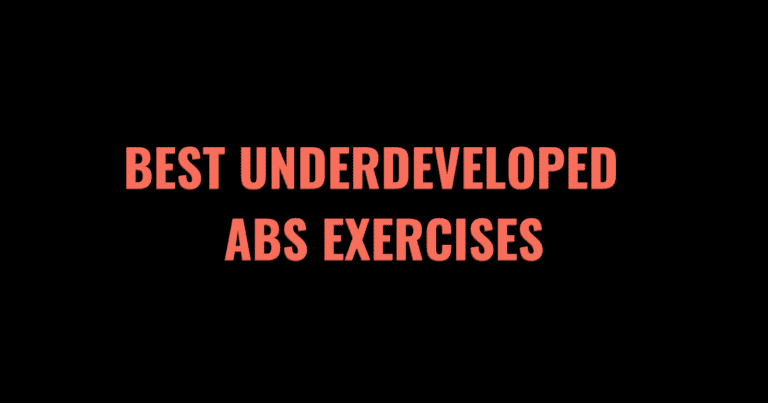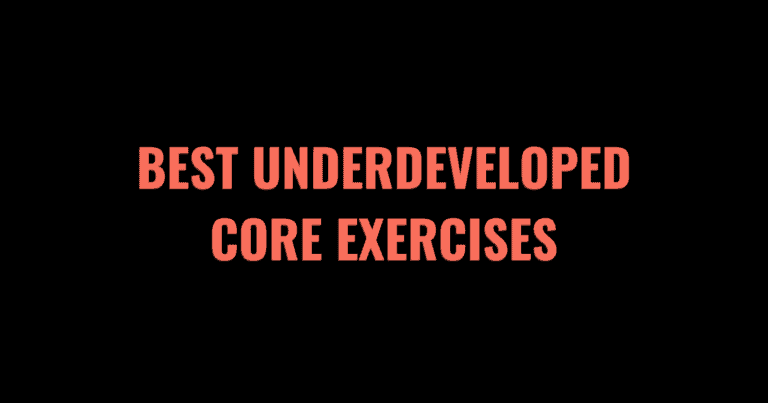Have your lower pecs stopped growing despite consistent training and seemingly endless bench pressing?
If you struggle to build a more muscular, fuller lower chest, you’ve come to the right place.
We’ll cover the best strategies to grow an underdeveloped lower chest, show you some of the best exercises, and explain the optimal rep ranges and intensities for lower pec growth.
Table of Contents
- 1 What is an underdeveloped lower chest?
- 2 The 8 Best Ways to Build a Bigger Lower Chest
- 2.1 1. Prioritize effective lower chest exercises
- 2.2 2. Optimize your technique for more intensity
- 2.3 3. Increase your overall chest training volume
- 2.4 4. Adjust your nutrition to cut body fat
- 2.5 5. Include serratus anterior training
- 2.6 6. Improve your chest and shoulder mobility
- 2.7 7. Try new lower chest exercises
- 2.8 8. Make the most out of machines
- 3 The 8 Best Exercises for a Bigger Lower Chest
- 4 What is an Underdeveloped Lower Chest?
- 5 Lower Chest Anatomy
- 6 Lower Chest FAQs
- 7 Grow Underdeveloped Muscle Groups
- 7.1 The 8 Best Ways to Grow Bigger Shoulders
- 7.2 The 8 Best Ways to Grow Bigger Traps
- 7.3 The 8 Best Ways To Grow a Bigger Upper Chest
- 7.4 The 8 Best Ways to Grow a Bigger Back
- 7.5 The 7 Best Ways to Grow Bigger Rear Delts
- 7.6 The 5 Best Ways to Grow Bigger Triceps
- 7.7 The 8 Best Ways to Grow Bigger Hamstrings
- 7.8 The 8 Best Ways to Grow Bigger Front Delts
- 7.9 The 8 Best Ways to Grow Bigger Upper Abs
- 7.10 The 8 Best Ways to Strengthen Abs
- 7.11 The 8 Best Ways to Build an Underdeveloped Core
- 7.12 The 8 Best Ways to Grow Bigger Biceps
- 7.13 The 7 Best Ways to Grow Underdeveloped Obliques
What is an underdeveloped lower chest?
Underdeveloped lower chest muscles occur when the lower portion of your pectorals is smaller or weaker than other muscles like the upper pecs and traps. You can grow underdeveloped lower chest muscles by scheduling lower pec exercises earlier in your workout, perfecting your technique, and improving your chest and shoulder mobility.
Good nutrition can also reduce overall body fat, revealing lower chest muscles built with appropriate training volume and intensity. We’ll review the best ways to grow your lower chest, some of the best lower chest exercises, and techniques to increase your lower chest size and strength.
The 8 Best Ways to Build a Bigger Lower Chest
- Prioritize effective lower chest exercises
- Optimize your technique for more intensity
- Increase overall chest training volume
- Adjust your nutrition to cut body fat
- Include serratus anterior training
- Improve your chest and shoulder mobility
- Try new lower chest exercises
- Make the most out of machines
1. Prioritize effective lower chest exercises
Although adding lower chest exercises at the end of your usual upper body workout is tempting, you must prioritize exercises that effectively target the lower pecs to prompt growth. Doing lower chest exercises first in your session allows you to hit them with more intensity and energy. Choose a few exercises that target the lower chest muscle fibers from varying angles to get the most out of your workout.
2. Optimize your technique for more intensity
Perfecting your technique by moving through a full range of motion is critical for targeting the lower chest. You must also push yourself near to or past muscular failure to grow stubborn muscle groups. To go beyond failure and see what your pecs are capable of, experiment with drop sets, forced reps, static holds, and exaggerated eccentric tempo work to strain your lower chest muscle fibers like never before.
3. Increase your overall chest training volume
The pec major is a large muscle, and while it’s great to focus on the lower chest, you should train the entire chest muscle to get the best results and give the illusion of more developed lower pecs. Since concentrating solely on a specific area can quickly become frustrating and demotivating, focus on being consistent with your overall chest training.
4. Adjust your nutrition to cut body fat
For some lifters, a saggy chest area is caused by a high body fat percentage. Even with highly developed lower pecs, you won’t be able to see the definition you’ve built if a layer of fat tissue is covering them. Combining effective training with a slight caloric deficit improves the visible definition of your lower chest.
5. Include serratus anterior training
The serratus anterior is the upper abdominal muscle that connects to the lower pec, spanning from the first to the eighth rib. Building this core muscle gives the appearance of a bigger chest and fills out the lower portion of your pec major. Some great serratus anterior exercises include the ab rollout, push-ups, and dumbbell pullovers.
6. Improve your chest and shoulder mobility
Some people leave potential chest gains on the gym floor because they lack the flexibility needed to effectively contract the pecs. Poor mobility prevents you from moving through a full range of motion, hindering metabolic damage and tearing of the target muscle fibers. The chest muscles are designed to be stretched under a load, so find a stretching routine that works for you, and don’t be afraid to drop the weight to enable a fuller range of motion.
7. Try new lower chest exercises
Novel stimulus is a great way to break through strength and hypertrophy plateaus. Over time, your muscles grow accustomed to the training they experience regularly. Adding new types of exercises tears the muscle fibers in new ways, triggering new muscle growth. For example, if you’ve done parallel bar dips for a while, experiment with straight bar dips. This variation is perfect as it forces you to lean forward, engaging the lower chest and serratus to balance yourself.
8. Make the most out of machines
Machine-based exercises sometimes get a bad rap as opposed to free weights like barbells and dumbbells. But they are fantastic for beginners or people struggling to perform exercises correctly to target specific muscle areas. Since the lower chest muscles can be challenging to isolate and require a particular arm angle and movement pattern, don’t be afraid to use machines. The pec fly machine is an excellent way to get used to the feeling of engaging your lower chest muscles.
The 8 Best Exercises for a Bigger Lower Chest
- Decline Bench Presses
- Forward Leaning Dips
- Decline Dumbbell Flys
- Straight Bar Dips
- Kneeling X Cable Press
- Incline Twisting Push-Ups
- Cable High-to-Low Flys
- Jackhammer Pushdowns
- Decline Dumbbell Presses
- Seated Machine Pec Flys
With any standard chest pressing exercise, focus on keeping a slight downward angle of your arms to better target the lower pec muscle fibers.
This helpful video from Athlean-X shows you how to position your arms to build a bigger lower chest and make technical tweaks for a more effective chest workout.
Related:
What is an Underdeveloped Lower Chest?
Underdeveloped lower chest muscles occur when your lower pectoral muscles lack in size and strength compared to your upper chest muscles, arm muscles, or shoulders. Underdeveloped lower pectoral muscles create an imbalanced aesthetic and make you look less lean and athletic. Without adequate lower chest muscular development, you won’t be able to get that chiseled line spanning from your armpit to your nipple.
Here is an example of how you can use some of the best exercises for your lower chest in your weekly training plan.
- Day 1: Decline Bench Press: 4 sets, 8 reps; Forward Leaning Dips: 3 sets, 12 reps
- Day 2: Decline Dumbbell Flys: 3 sets, 15 reps; Jackhammer Pushdowns: 3 sets, 12 reps
- Day 3: Decline Dumbbell Press: 4 sets, 10 reps; Cable High-to-Low Flys, 4 sets, 20 reps
Lower Chest Anatomy
The lower chest muscles primarily comprise the pectoralis major. The pec major is the larger of the two pec muscles and is a thick, fan-shaped muscle that spans across the sternum from the clavicle to the upper arm bone. The clavicular pec major comprises your upper chest, while the sternal pec major forms the majority of your lower chest.
The lower pectoral muscle fibers follow a downward angle from your armpit toward your sternum. Move your arms in a similar direction to engage these muscles most effectively.
The anatomy of the lower pectoral muscle explains why the decline bench press is more effective than the flat bench press and why high-to-low cable flys are better than straight flys. That’s why they were included in our guide to cable exercises for the lower chest.
Image source: Get Body Smart
Lower Chest FAQs
How often should you train your lower chest?
The large pec major muscle experiences significant tearing when trained with heavy loads, so it doesn’t require as much volume as some other muscle groups. The Renaissance Periodization Hypertrophy Guide for Pectorals suggests that you hit your lower chest with at least six sets per week, and split into two sessions, to see size and strength gains. Most intermediate lifters need between 20 and 35 weekly sets depending on experience level and frequency of chest training.
If you’re unsure of how many sets you need, a solid approach is to add one or two sets of direct lower chest training until you cannot recover in time for your next session but can still meet your rep targets. The sweet spot for hypertrophy is when you are challenging your muscles without sacrificing recovery.
At what intensity should the lower chest be trained?
To train your lower chest effectively, lift weights between 30% and 85% of your one-rep max. For most lifters, this translates to a weight you can lift for 5 – 30 reps in your first set if taken to failure.
Keep half your weekly training volume in the moderate intensity, using a weight you can lift for 10-20 reps. You can split the remaining volume between heavy (5-10 rep range) and light (20-30 rep range) intensities.
What rep range should I use for training the lower chest?
You should train your chest with a combination of rep ranges, usually between 5 and 30 reps per set. For heavier compound exercises like decline bench presses, use lower rep ranges of 5 – 15.
Moderate rep ranges (10-20 reps) are most effective for forward-leaning dips and incline-twisting push-ups. Use the 20-30 rep range for chest isolation exercises if you aren’t limited by forearm and hand muscular endurance.
What types of exercises train the lower chest?
The lower pectorals are responsible for the adduction, flexion, and internal rotation of the humerus (upper arm). Chest movements requiring your arms to move at a downward angle engage the muscle fibers of your lower pec major more effectively. Pressing exercises encouraging internal rotation and upper arm flexion (moving straight out in front of you) are also excellent for targeting the lower chest.
You can achieve the optimal angle for targeting the sternal head of your pec major by leaning slightly forward or positioning yourself on a decline bench. These technical adjustments help you recruit more muscle fibers in the lower chest. Some of the best exercises for working your lower chest are the decline bench press, dips with a slightly forward lean, and jackhammer pushdowns.
Don’t have access to a decline bench? Check out our list of the best decline bench press alternatives.
Does having a weaker lower chest matter?
Your chest muscles do much more than just fill out your torso and look great in shirts. Well-developed pecs stabilize your shoulder joint, improve posture, and prevent back pain. Your pecs lay across the ribcage and expand with every breath, so you breathe better with stronger pecs. The pecs are also vital for daily living, such as carrying heavy objects, pushing, and throwing.
Grow Underdeveloped Muscle Groups
If you enjoyed this post, check out our other guides on how to grow lagging muscle groups.

